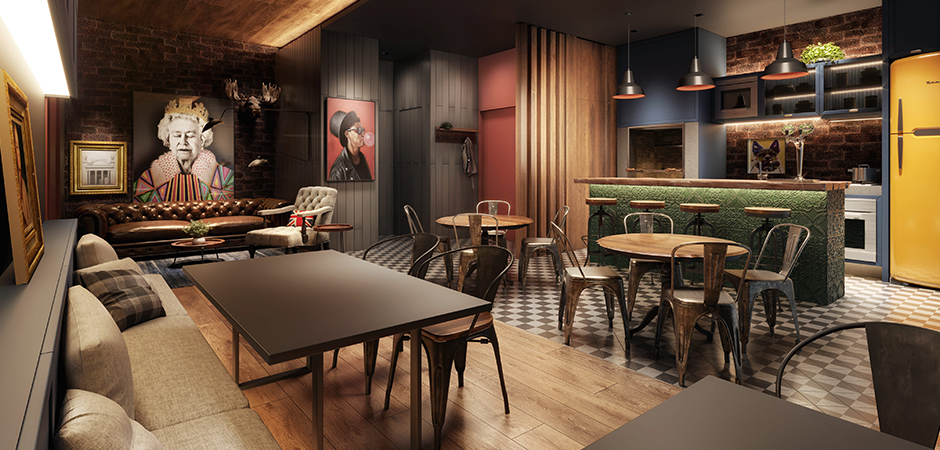When it comes to designing commercial spaces, blending art and culture isn’t just a luxury—it’s a strategic move that can enhance brand identity and customer experience. This approach not only makes a space visually appealing but also fosters a deeper connection with its occupants. In this article, we’ll explore how Disha4Designs integrates art and culture into commercial interior spaces, transforming them into dynamic environments that resonate with both employees and clients.
Why Art and Culture Matter in Commercial Interiors
- The Role of Art in Commercial Spaces: Art in commercial spaces serves multiple functions. It’s not just about aesthetics; it can influence mood, create focal points, and even become a conversation starter. Art can also reflect a brand’s values and mission, making the space feel more authentic and engaging.
- Cultural Integration: Beyond Decor: Cultural elements go beyond mere decoration. They provide context and meaning to the space, connecting it with the local community or the broader cultural landscape. This integration can enhance the space’s relevance and appeal to diverse audiences.
Approaches to Integrating Art and Culture
- Understanding the Client’s Brand and Values: Before diving into design, it’s crucial to understand the client’s brand identity and core values. This understanding guides the selection of art and cultural elements that align with the brand’s message and mission.
- Incorporating Local Art and Artists: Featuring work from local artists not only supports the community but also adds a unique touch to the space. Local art can provide authenticity and a sense of place, making the commercial space feel more connected to its surroundings.
- Cultural Themes and Symbols: Integrating cultural themes can be achieved through various elements like color schemes, patterns, and motifs. These elements should be chosen carefully to reflect cultural symbols and narratives relevant to the space’s purpose and audience.
Case Studies of Successful Integration
- Disha4Designs: A Case Study in Innovation: Disha4Designs excels in merging art and culture with commercial interiors. Their projects showcase how thoughtful integration of these elements can create inspiring and effective spaces. For instance, their design for a tech startup incorporated contemporary art pieces that symbolize innovation and progress, aligning perfectly with the company’s ethos.
- Retail Spaces: Creating Memorable Experiences: In retail spaces, art and cultural elements can transform shopping into an experience. Disha4Designs’ approach includes using cultural artifacts and art installations that enhance the shopping environment and encourage longer visits.
- Corporate Offices: Boosting Employee Engagement: In corporate offices, integrating art and culture can boost employee morale and creativity. Disha4Designs integrates interactive art installations and culturally inspired decor to create an engaging and motivating work environment.
The Benefits of Art and Cultural Integration
- Enhanced Brand Identity: Incorporating art and cultural elements helps in establishing a strong brand identity. It visually communicates the brand’s values and message, making it memorable and distinctive.
- Improved Customer Experience: A well-designed space that integrates art and culture can significantly enhance the customer experience. It makes the space more inviting and engaging, encouraging positive interactions and brand loyalty.
- Increased Employee Satisfaction: Employees benefit from working in a space that reflects their cultural values and interests. It can lead to increased job satisfaction and productivity, contributing to a positive work culture.
Challenges and Considerations
- Balancing Aesthetics and Functionality: One of the main challenges is balancing aesthetics with functionality. Art and cultural elements must enhance the space without compromising its primary purpose or usability.
- Budget Constraints: High-quality art and cultural elements can be expensive. It’s important to find creative solutions that fit within the budget while still achieving the desired impact.
- Cultural Sensitivity: When integrating cultural elements, sensitivity is crucial. It’s essential to respect and accurately represent the cultures being referenced to avoid misrepresentation or offense.
Conclusion
Integrating art and culture into commercial interior spaces is more than just an aesthetic choice—it’s a strategic approach that can enhance brand identity, improve customer experiences, and boost employee satisfaction. Disha4Designs demonstrates how thoughtful integration of these elements can transform commercial spaces into vibrant, engaging environments that resonate with their audience. By understanding the client’s needs and carefully selecting art and cultural elements, designers can create spaces that are both functional and inspiring.


